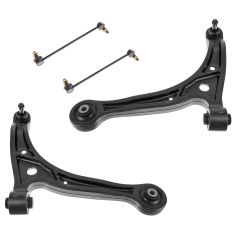1ASFK03813-2002-04 Honda Odyssey Front 6 Piece Steering & Suspension Kit TRQ PSA59415

Replaces
2002 Honda Odyssey Front 6 Piece Steering & Suspension Kit TRQ PSA59415

Product Reviews
Loading reviews
There are no reviews for this item.
Customer Q&A
No questions have been asked about this item.
Honda is a registered trademark of Honda Motor Co., Ltd. 1A Auto is not affiliated with or sponsored by Honda or Honda Motor Co., Ltd.
See all trademarks.











